
Limits in life inspire creativity. The same is true for nutrition – when you eliminate just one component from your diet, you can find a multitude of varieties to replace it. Anyone who is vegetarian, anyone with allergies, or anyone who follows a special diet, such as a Mediterranean diet or a low-sodium diet will tell you that.
In this article, we will learn about sorghum, an ancient wild grain compatible with gluten-free and diabetic diets.
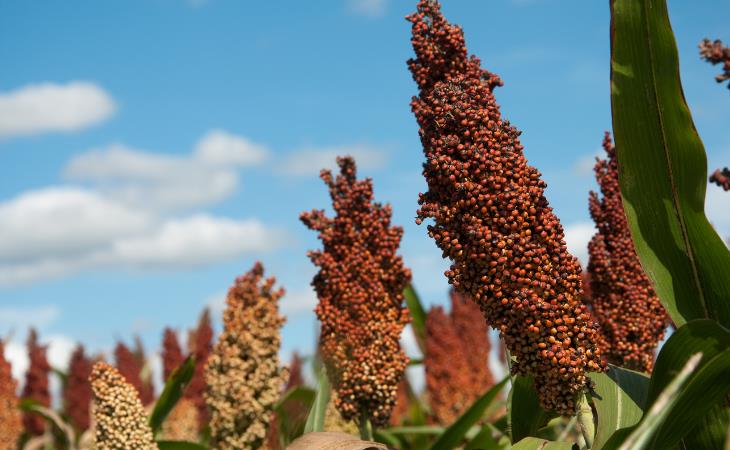
The United States is the largest producer of sorghum in the world. It is grown mainly as a feed for livestock, as a fodder plant, for sorghum syrup, and recently as an alternative grain for a gluten-free diet. Sorghum syrup is a delicious natural sweetener made from the cane and leaves of the sorghum plant. Much like honey, it does not require cooling. It is often compared with molasses, which is made from the sugarcane plant, but it is much sweeter and contains much less total sugar.
Sorghum is a long distant relative of corn. It is essentially the wild raw form of corn before it was cultivated into its current form of sweetcorn. When it grows, the stems and leaves look just like those of a corn plant. You can even pop it on the stove as you would corn. The result is much smaller and crunchier, but mighty tasty.
There are three main types of sorghum: black, white, and red. You will most likely find white sorghum in nature stores or online.
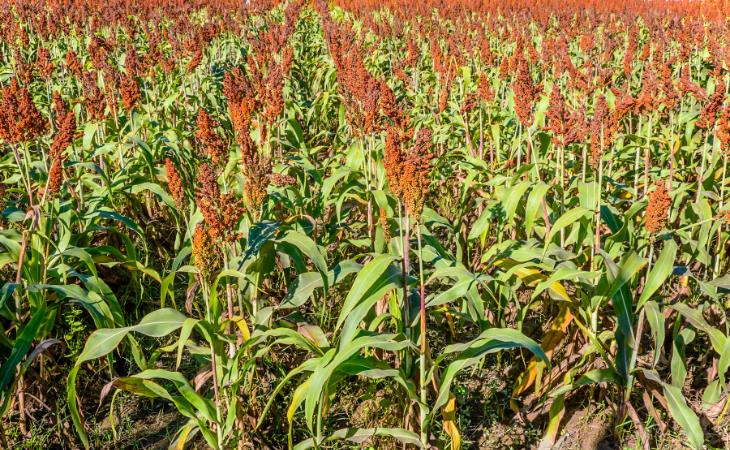
In addition to B1 and B6, sorghum also contains copper, iron, magnesium, phosphorus, potassium, selenium, and zinc. One cup of cooked sorghum contains 5 g of fiber, which makes up 20% of the daily recommended value for adults.
Related: 5 Warm Breakfast Ideas to Inspire a Gloomy Fall Morning
It has more protein and more iron than quinoa, which is highly praised for its high-protein content, but where sorghum truly shines is its high content of polyphenols. These are natural plant compounds associated with the reduction of various chronic diseases, which determine the antioxidant value of a plant food. Among all grains, sorghum has the highest content of polyphenols, making it comparable to the antioxidant potential of fruits!
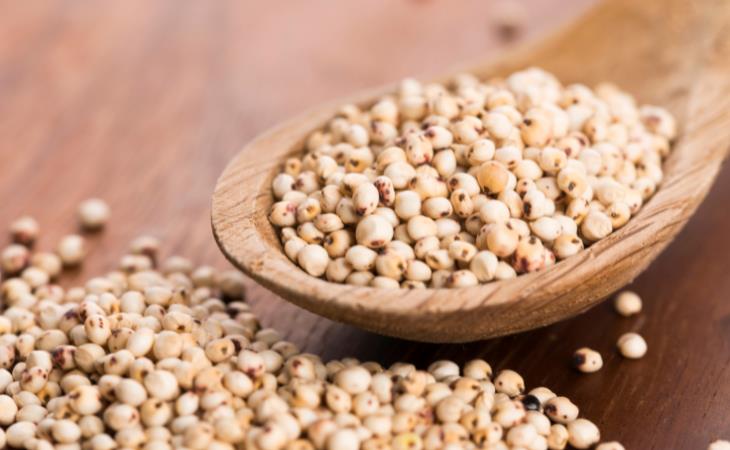
When it comes to food security, sorghum does not fall behind. It is a highly drought-resistant ancient grain that gives an exceptionally high yield. In the US, 91% of sorghum is watered by rain.
Basic recipe for sorghum
Sorghum is usually cooked in a 1:3 or 1:4 water ratio. You can either soak it overnight or skip straight to cooking it.
For every cup of sorghum boil three or 4 cups of water with some salt for taste. Wash and strain the sorghum and add it to the boiling water. Boil again, reduce heat to a gentle simmer, and cook uncovered for 50 to 60 minutes, until the greens are soft and chewy.
You can also check out these recipes:
For dinner and lunch - Sorghum Pilaf
For a festive yet easy dessert - Strawberry Vanilla Sorghum Parfait
For homemade gluten-free bread - Gluten Free Chocolate Chip Pumpkin Bread

9 Vegetables That Are Healthier Cooked
Learn about the 9 vegetables you should prefer cooked rather than raw, and why.
 10:17
10:17
Spicy Garlic Potato Noodles - Recipes From Scratch
Chef John shows you how to make potato noodles From Scratch! No technique or special equipment is needed!
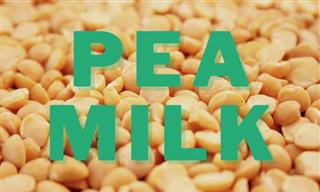
Why Pea Milk is the Best of Them All
We're so hooked on pea milk. It's an effortless, delicious, nutritious protein punch.
 6:14
6:14
What (Non-Psychedelic) Mushrooms Can Do for Your Brain
Lion's mane mushrooms are memory-enhancing brain food! Learn the science behind them here.

Sprouts: Growing, Recipes, and Nutritional Values
Learn all about growing sprouts at home, their nutritional values, what kinds there are and a recipe.
 4:55
4:55
The MOST Important Exercise to Practice For Seniors
This video will walk you through one simple exercise recommended daily for older adults.
 7:14
7:14
3 Key Mistakes Seniors Make with Walking Sticks
These walking stick mistakes can harm seniors.
 10:10
10:10
6 NATURAL Ways to Treat Swollen Feet & Ankles
Swelling in your feet and ankles can lead to a variety of complications. Here’s how you can get rid of the naturally.
 5:58
5:58
The Amazing Anti-Diabetic Tea You Never Knew About
Looking for a natural way to lower your blood sugar levels? Try this wonderful tea recipe.
 11:45
11:45
Dissolve Blood Clots from Your Body With These Vitamins
Untreated blood clots can lead to life threatening complications. Here are some vitamins that can help dissolve them safely.

How to Treat an Obstruction in Your Stomach
Did you know that you can naturally treat gastric obstructions by adding to organic ingredients to your diet?
 7:55
7:55
Natural Methods to Improve Hearing That Actually Work
Now you can improve your hearing at home with these natural methods.

Owning a Cat Can Do Wonders For Your Health!
Pet ownership, especially cat ownership, can improve the quality of a person's life. Here are 10 health benefits of owning a cat.

Did This Technique Just Kill 99% of Cancer Cells?
This revolutionary method, employing the power of vibrating molecules, heralds a new dawn in the fight against cancer, offering hope for a more efficient and less invasive approach to treatment.

An Ancient Chinese Story with a Lovely Moral
This beautiful Chinese tale tells the story of a maid and how she learned respect for her mother-in-law
 3:40
3:40
Looking at Caffeine, Shampoo and Rosemary for Hair Growth
Looking at the real research done behind these ingredients helps us see which really help and which still needs more research to know if they are effective on humans.

Feeling ConstantlyTired? You May Suffer From Chronic Fatigue
Did you know that millions of people suffer from Chronic Fatigue annually? Read about the symptoms and treatments for this plaguing condition.
 10:17
10:17
9 Things Your Fingernails Can Tell You About Your Health
This video delves into nine revealing aspects of your fingernails that could signal important information about your health.
 5:15
5:15
Difficulty Sleeping? Try This Healthy Drink Before Bed
Struggling with sleep? This natural drink can help.
 4:46
4:46
What You Should & Shouldn't Eat With a Stomach Ache
Not sure what you should and shouldn't eat with an upset stomach? This video has all the answers!
 5:00
5:00
Here's What Your BMI Does NOT Mean...
Many people use BMI (Body Mass Index) as a way of working out their level of physical fitness, however the results are typically far from accurate...
 7:22
7:22
Try This Natural Drink to Detoxify and Cleanse Your Liver
This natural, easy-to-make drink can do wonders to your liver!
 11:06
11:06
Understanding Nerve Health: Expert Q&A Session
Neurologist and Assistant Professor Dr. Natalie Cheng answers the internet’s most burning questions about neurology.

Are You at Risk for "Building Sickness"?
Have you heard of "building sickness"? Because you may have had it.
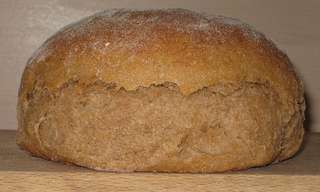
10 Great Uses For Your Leftover Stale Bread
Sometimes bread gets stale, but next time don't throw it away - you can still put it to good use!

10 Surprising Reasons You’re Feeling Stressed Right Now
We think we know what makes us stressed, but there are a surprising number of minor daily activities stressing you out that you're not aware of...

HOW MUCH Exercise Do I Need to Burn Off These Foods?
Before you go for that takeaway, you should see how much exercise you will need to do to burn off those calories. This chart will show you.
 4:16
4:16
Feeling Bloated? This Is How to Improve Digestion Quickly
How can you improve your digestion quickly? This guide explains.

7 Crucial Things You Don't Know About Your Immune System
Our immune system is one of the most incredible biological structures. It protects us from viruses, infections and other harmful bacteria. But here are a few things about it I bet you didn't know!

Suffer From Dizziness? These Home Remedies Will Help...
We all experience dizziness from time to time. These home remedies will help alleviate the symptoms.
 12:55
12:55
STOP Calf Pain - The Best Stretches for Your Sore Calves
Get rid of your calf pain for good with these simple exercises.
 6:02
6:02
Foot Hurts When Walking? Avoid These Mistakes!
Does your foot hurt while walking? You might be making some mistakes without even realizing.
 3:13
3:13
Is Calorie-Counting Just a Nutrition Theory Gone Wrong?
We've all been counting calories for decades in hopes to cut down on our waistlines, but it turns our that the calorie system might be wrong
 5:04
5:04
Important: The Dangers of Mixing Drugs Explained
What happens when we mix these drugs? Find out in this informative video.
 4:42
4:42
De-Stress Your Brain in 30 Seconds With These Simple Tips
A doctor shows a useful and simple technique with the help of which you can achieve instant relaxation. Find out more...
 5:06
5:06
Here's a Fast Technique to Put You to Sleep In 1 Minute
Struggling to fall asleep at night? Here’s a super exercise that might make you doze off in just 60 seconds.
 15:17
15:17
Finding it Hard to Get Off from the Floor? Watch This...
Struggling to get up from the floor frequently? Watch this video for some safe, easy tips.
 1:11
1:11
Here's How to Clear a Stuffy Nose Instantly
There are some truly bizarre methods for clearing a stuffy nose out there, but they really seem to do the trick. Learn these methods today.

10 Recipes for Health Boosting, Natural Smoothies
Learn easy recipes for super-healthy smoothies you can whip out in no time.

Study: A Daily Spoon of Olive Oil Lowers Risk of Dementia
s. A comprehensive study from the United States suggests that consuming just a spoonful of olive oil each day could significantly reduce the risk of dementia-related deaths.
 5:03
5:03
The Secret to Flexible Muscles: How Stretching Works
Discover the actual effects of stretching on your muscles and learn ways to enhance your flexibility.

7 Things Stress Does to Everybody, Without Exception
Stress is one of the biggest problems we have to deal with in modern life. Here are 7 recent conclusions about stress you should know about.

7 Anxiety-Inducing Activities You Are Unknowingly Doing
Be careful! These supposedly calming common habits are making you more anxious.
 17:25
17:25
Chair Yoga: a Complete At Home Video Practice
This is a complete 17-minute beginner friendly yoga sequence suitable for all ages you can do on your chair.
 14:18
14:18
Learn Three Vagus Nerve Exercises for Anxiety Relief
In this video, you'll be shown three exercises of the vagus nerve to help mitigate anxiety and promote peacefulness.
 5:45
5:45
Memory Not Working? The Answer May Be Hiding in Your Sleep
If you want to remember better, this lecture will tell you - The answer is in your sleep.


